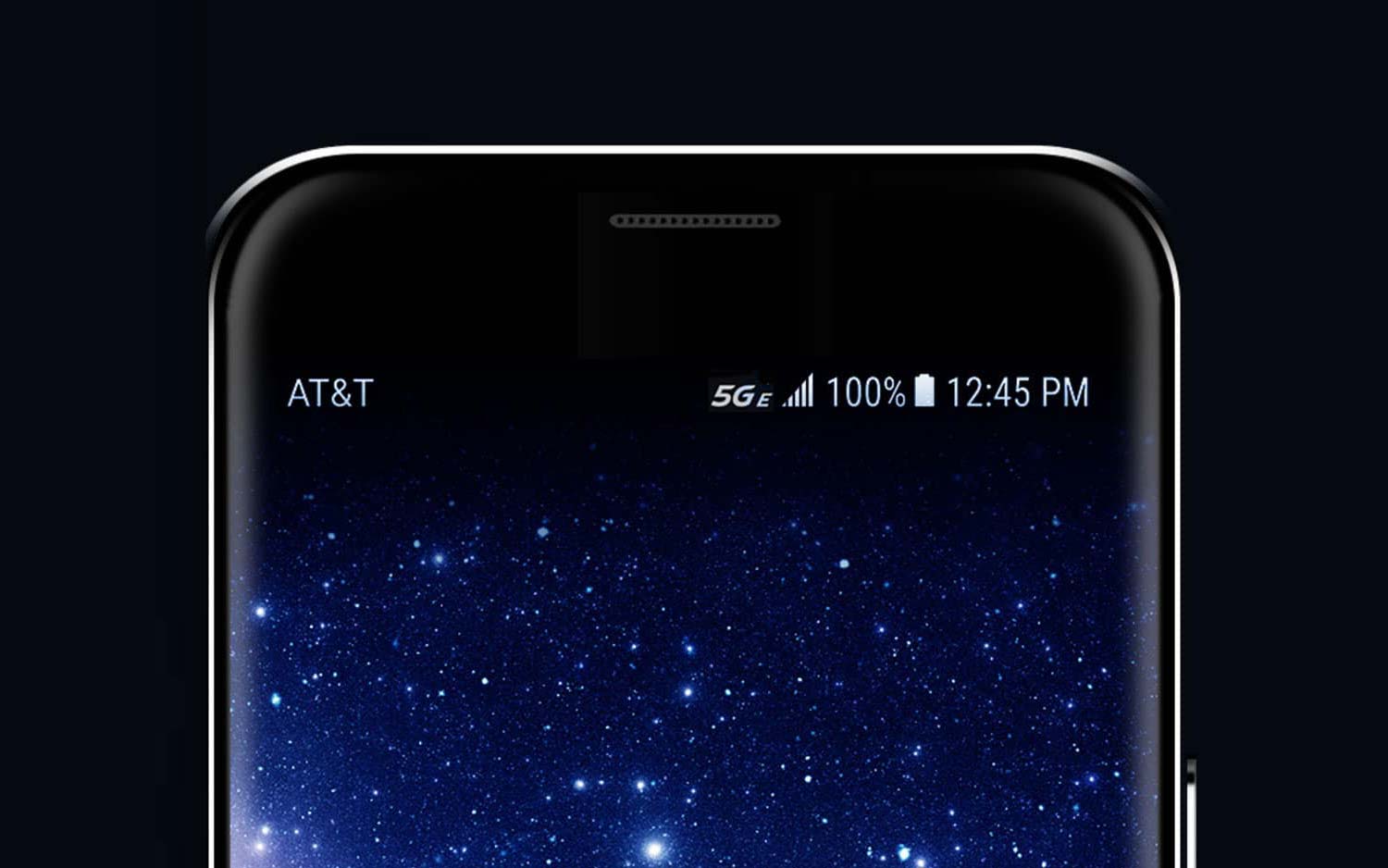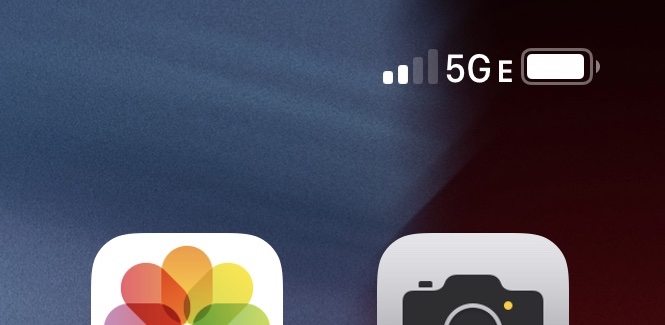AT&T’s 5GE Explained: What It Is, And What It Isn’t
Here's what AT&T's 5GE really means, what phones you can expect to see it on and why you shouldn't be too hyped about it.
In an attempt to steal thunder from its competitors, AT&T launched its "5GE" designation in December 2018, which the carrier says is meant to let its customers know when they are in an area with 5G Evolution coverage. But what is 5GE, anyway?
The moniker is misleading and causing a lot of confusion for smartphone users, especially since AT&T has announced a total of 19 cities getting real mobile 5G this year. Verizon has also launched mobile 5G in two cities so far.

Here's what 5GE really means, what phones you can expect to see it on and why you shouldn't get overly excited about it.
Updated May 29: Added testing to compare AT&T's 5GE speeds against Verizon and T-Mobile's 4GE networks.
What is 5GE?
5GE, or 5G Evolution, is merely AT&T's name for its latest and greatest iteration of LTE, which utilizes specific technologies, like 256 QAM, 3-way carrier aggregation and 4X4 MIMO that will play a role in 5G's ultimate development. 5GE is available in 400 markets and counting.
MORE: First Verizon 5G Speed Tests: Here's How Fast It Is
That said, 5GE in all practical terms does not deliver an experience that is ostensibly different from what's already available with 4G LTE. In fact, other carriers like Verizon and T-Mobile already have it too, have for years and simply call it LTE Advanced.
Mobile insights firm OpenSignal recently published data from speed tests comparing 5GE to rival networks' LTE, and found that AT&T's service was actually slower. The 28.8 Mbps result from 5GE trailed Verizon's 29.9 Mbps and T-Mobile's 29.4 Mbps. We tested AT&T's 5GE network against T-Mobile and Verizon's 4G LTE networks and found that 5GE downloads were consistently slower than 4G LTE in New York City.
Even in ideal circumstances, 5GE should merely provide speeds averaging around 40 Mbps. That's a hair faster than AT&T's current 37.1 Mbps average that we recorded when we conducted our nationwide test of the fastest wireless networks in the U.S. last summer, but still well behind Verizon's 57.3 Mbps.
Unsurprisingly, AT&T is holding fast to its loose definition of 5G. In fact, in January, Tom's Guide's Mark Spoonauer caught up with Igal Elbaz, AT&T's senior vice president for wireless technology, who defended the new naming convention as a way of informing AT&T's customers that "there is an enhanced experience [available] in their market."
"All of our investment in the infrastructure and hardware is all 5G ready, so the moment the 5G software and the 5G devices show up, it's a software upgrade to our network to enable our customers to move to 5G," Elbaz said.
MORE: The Truth About 5G: What's Coming (And What's Not) in 2019
What Devices Get 5GE?
According to AT&T, there are about 20 or so devices that support the technologies that underpin 5GE. It bears repeating, though, that this does not mean these same phones will support full 5G on the carrier when it launches.

Among them are Apple's latest iPhones — the iPhone XS, XS Max and XR — that began displaying the logo with the release of iOS 12.2. A swath of Android phones fitted with Qualcomm's X24 LTE modem, like the Galaxy S9 and Note 9 series, are also included in that company. And of course, the recently-released Galaxy S10 family has joined their ranks as well.
What About AT&T's Real 5G Network?
AT&T has launched mobile 5G service in parts of 12 cities so far, including Atlanta, Charlotte, Dallas, Houston, Indianapolis, Jacksonville, Louisville, New Orleans, Oklahoma City, Raleigh, San Antonio and Waco.
The carrier says that it will then expand to a total of 21 cities by adding mobile 5G to parts of Chicago, Las Vegas, Los Angeles, Minneapolis, Nashville, Orlando, San Diego, San Francisco, and San Jose.
However, for now, you can only access this network using a 5G mobile hotspot. 5G phones will be coming online later.
Outlook
Nobody is taking issue with AT&T educating customers about the availability of an enhanced experience; rather, the problem lies in the label the carrier has chosen.
When true 5G launches, the speeds we see will be in the ballpark of 1Gbps — at least 20 times what 5GE currently offers. As such, it's hard to argue that the 5GE designation isn't misleading to consumers, in much the same way AT&T's, T-Mobile's and Sprint's insistence on branding HSPA+ and WiMax as 4G was back in the very early part of the decade.
But history is repeating itself, and at least we can take comfort in the fact that we're all a little wiser this go around. That goes for customers, experts and even AT&T's competitors, which have taken to all forms of media to slam the carrier at every turn.
Sprint event went so far as to file a suit against AT&T over its arguably misleading marketing tactics — a suit which the two companies reportedly settled, according to Law360. While neither side has explained the terms of their agreement, AT&T will keep using the 5GE branding, and Sprint will likely scale back its very vocal, very public attacks — the height of which involved a full-page ad in the New York Times back in March which labeled AT&T's exercise "fake 5G."
As for when you'll see true 5G, 2019 should finally be the year. Carriers are gearing up to introduce 5G-enabled handsets from the likes of Samsung, OnePlus, LG and even Motorola (if you count Verizon's exclusive 5G Moto Mod). Select neighborhoods already have access to residential service, and hotspots and other accessories are also on the brink.
One day, 5GE will thankfully be a distant memory.
Sign up to get the BEST of Tom's Guide direct to your inbox.
Get instant access to breaking news, the hottest reviews, great deals and helpful tips.
Adam Ismail is a staff writer at Jalopnik and previously worked on Tom's Guide covering smartphones, car tech and gaming. His love for all things mobile began with the original Motorola Droid; since then he’s owned a variety of Android and iOS-powered handsets, refusing to stay loyal to one platform. His work has also appeared on Digital Trends and GTPlanet. When he’s not fiddling with the latest devices, he’s at an indie pop show, recording a podcast or playing Sega Dreamcast.
